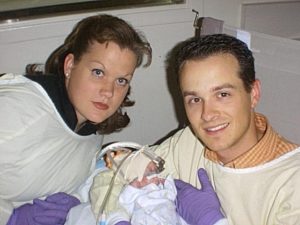Narberth Ambulance Overcomes Major Hurdles In Its Billing System
Pennsylvania EMS Provider Achieves Major Billing Milestones Through Payor Logic Partnership and ESO Integration
The Volunteer Medical Service Corps of Narberth was established in 1944 by residents of Narberth Borough, a suburb of Philadelphia, to provide transportation and first aid for soldiers returning from World War II via Philadelphia’s ports. The organization, now known as Narberth Ambulance, has expanded over the past 70 years from a small station with two ambulances to a full-fledged EMS service that makes nearly 10,000 trips annually, employs 33 full-time staff, 44 part time employees, and 80 volunteers. Narberth covers four Philadelphia area communities with two stations, seven ambulances, two responder vehicles and one mass casualty/rehab bus.
While Narberth Ambulance has seen tremendous growth and success throughout its history, recent times have brought new challenges. Changing technology in the healthcare industry paired with declining reimbursement over the past several years left Narberth, like many other EMS services, facing issues with its billing system and claims processing. These complications made claims longer to work and payment harder to collect. At the height of this problem, Narberth’s billing team needed from five to ten business days to process a claim.
The Issue at Hand
According to Meg Nelson, billing lead for Narberth, “The first barrier encountered by our billing staff was simply trying to obtain correct demographic and insurance information for our patients.” Narberth faced ongoing issues in efforts to receive face sheets and up-to-date information from local hospitals. Despite access to EHRs at hospitals, repeated follow-up calls became a necessity, hampering the productivity of those involved on both the hospital and EMS sides.
John Roussis, executive director of Narberth Ambulance, also shared his insight on the issues. “Because our data was often incorrect, we experienced a high volume of return mail,” he said. “The administrative burden was a huge challenge with hundreds of steps to hunt down correct addresses, multiple piles of return mail, and extra postage to resend invoices.” Furthermore, decreases in coverage from commercial and government payors made it increasingly difficult to obtain correct, valid and billable insurance information to process claims and collect payment. Narberth clearly needed to make monumental changes to its claims processing, insurance discovery and payor reimbursement practices to avoid further harm to the organization’s financial stability.
EMS Billing Interoperability Cuts Manual Intervention by 80%
In 2017, Narberth implemented new revenue cycle technology to increase efficiency in each of the previously mentioned areas. The application was seamlessly integrated with ESO, Narberth’s established billing system, to reduce return mail, boost staff productivity and hasten reimbursement. Here’s how interoperability between the two systems works:
- The Narberth crew enters information into ESO’s patient care record after a trip completion.
- Once entered, the data is automatically uploaded in the vendor’s billing module.
- A part-time staff member verifies the chart for accurate data, enters charges and preps the case for billing.
- Within ESO, the new technology application from Payor Logic sends an immediate query to find any missing demographics, insurance information or other pertinent details in real time, and populate the ESO billing software with correct, billable information.
With this system in place, Narberth’s billing staff conduct their manual process only if no information is available—a mere 20 percent of the time. Narberth Ambulance has effectively dropped its time to work a claim from an estimated seven days down to only seven minutes.
“We’ve relieved billing burdens and effectively reduced time to process claims by 66 percent,” said Roussis. “We are now performing only one third of the paperwork, calls and claims-related tasks that we handled before. Our team calls the integrated ESO and Payor Logic solution the magic button for EMS billing.”
Payability and Deductibles Next Target
With its billing system now automated and integrated, Narberth’s claims processing efficiency is better than ever—time waste is down and dollars have become far easier to collect. However, Roussis doesn’t want to stop there.
Roussis intends to continue tackling inefficiency. He plans to use Payor Logic to help address communication issues with commercial payors, analyze payment likelihood for self-pay accounts, and improve the organization’s deductible management.
The issues Narberth Ambulance faced are bound to become more common in the EMS world as the healthcare industry becomes more reliant on increasingly complex technology. The most important takeaway in the face of change is that integrated EMS technology solutions are out there to keep billing struggles from distracting providers from their top priority—saving lives.


